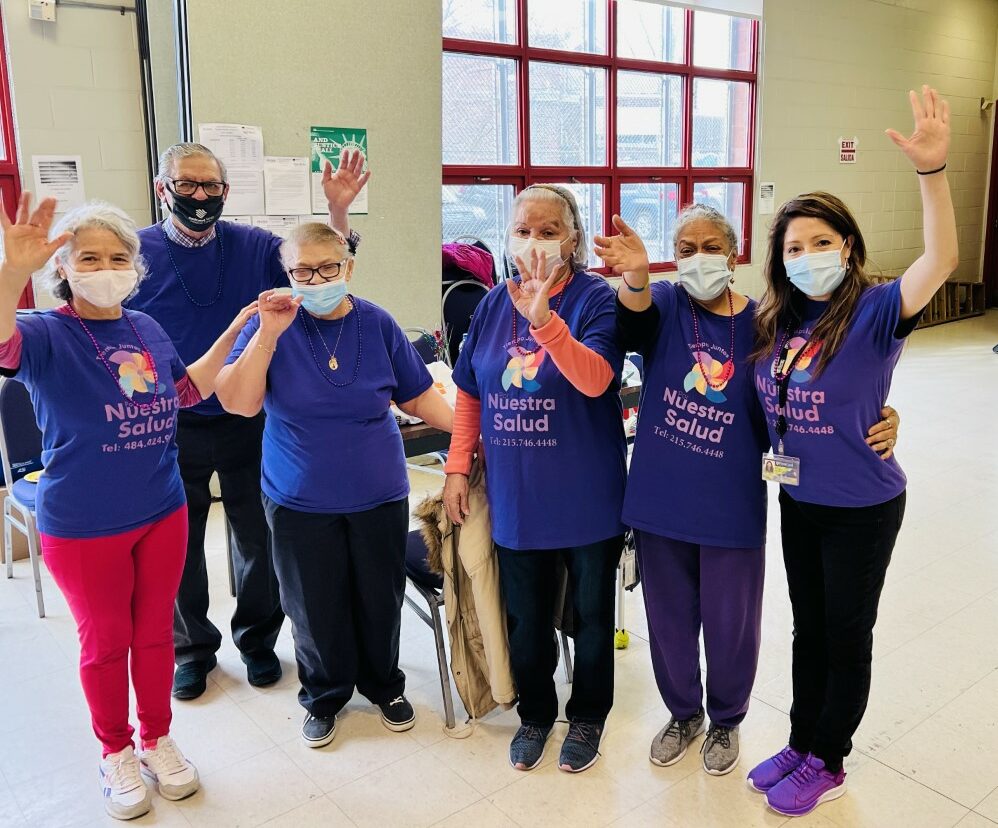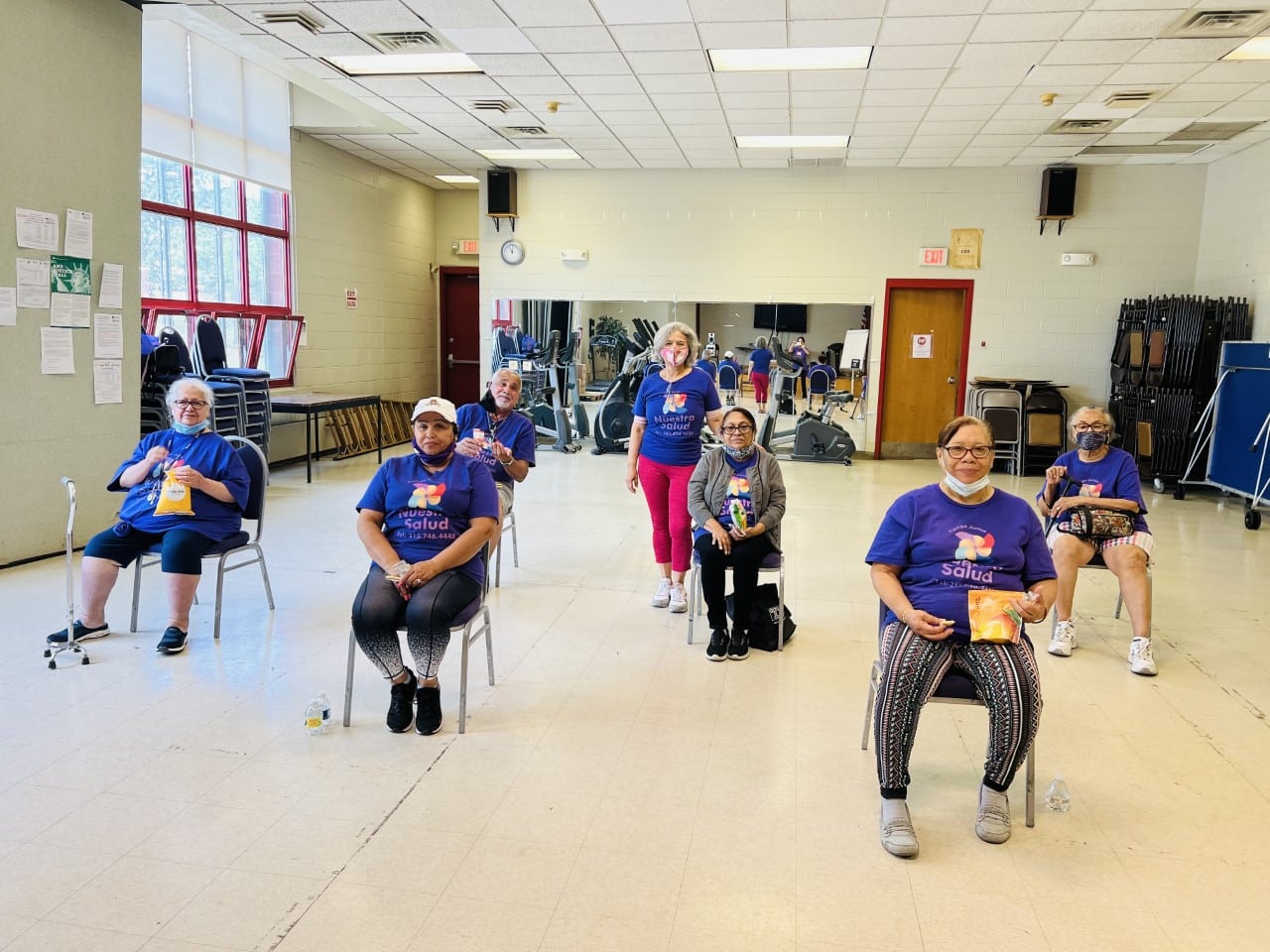By Meghan McCarthy
Latino older adult communities are some of the most sedentary in the country, but one University of Pennsylvania researcher has shown that group fitness and wellness education classes can help improve universal health outcomes.
These universal improvements could lead to improved cognitive health.
“To me, it speaks to memory,” said Adriana Perez, PhD, ANP-BC, FAAN, of Penn’s School of Nursing. “The brain is capable of learning new things no matter what age.”
The CDC reports that 32.1% of older Latinos live an inactive lifestyle outside of work—the highest amongst all race/ethnicity groups.
This is largely due to social and structural determinants of health such as access to healthy food, healthcare, safe housing and neighborhoods, and reliable income. These everyday necessities are essential for healthy brain aging.
Latinos are more likely than their peers to face difficulty walking outdoors due to extreme temperatures or safety concerns. It is more likely for Latino communities to struggle to afford physical activity programs or gym memberships than white populations. Language barriers can make group fitness classes difficult.

Participants of Tiempo Juntos with community health promoter, Ruby Rivera and Dr. Perez
To confront this challenge, Dr. Perez studies effective, culturally relevant strategies to engage the Latino community in Tiempo Juntos Por Nuestra Salud, which is a clinical trial that translates to “Time Together for Our Health.”
“I see exercise as a non-pharmacologic therapy for improving blood pressure and better clinical outcomes,” said Dr. Perez. “It’s a great way to not just promote heart health, but also memory health, sleep, and other outcomes found to be important in Latino elders.”
Participants in Tiempo Juntos are randomly assigned to one of two groups: exercise or health education.
Over the span of 12 weeks, exercise group participants meet twice a week for an hour to learn indoor exercise activities and conditioning. Health education group participants have the same time and attention schedule; however, sessions are focused on topics that are relevant to older adults. Education materials are adapted from the National Institute on Aging and were recommended by focus groups in preliminary research.
At the heart of the exercise intervention group, discussions, led by a community health promoter, focus on individual motivation, goal setting, promoting social support and community resources for staying active. Both groups are conducted in Spanish and take place in safe community partner sites.
Participants’ baseline physical activity and health outcomes (cardiovascular, cognitive, and sleep) are tested at the start of the study and at 3, 6, and 12-month follow-ups. While the study is still collecting data, analysis is planned for early Fall.

Participants of Tiempo Juntos with community health promoter, Ruby Rivera
So far, the Tiempo Juntos study team is finding that recruitment and retention efforts that focus on Latino cultural values (confianza, respeto, dignidad, familismo) have been effective thus far. Plus, with the guidance of the Tiempo Juntos community advisory board, the team has adapted strategies that recognize sub-cultural and linguistic differences among participants that represent many different Latin-American countries. Recruitment has exceeded study goals and less than 10 % of participants have been lost to attrition.
Dr. Perez began her career as a nurse practitioner in Arizona, where she primarily served Hispanic/Latino patients.
“Older Latina women would suffer from risk factors related to cardiovascular disease,” said Dr. Perez. “This motivated my passion for research and prompted me to look into ways to promote exercise for cardiovascular health within the community.”

Adriana Perez
This experience ultimately prompted her to work in collaboration with community organizations, including older Latinos to start the design of Tiempo Juntos.
Beyond health outcomes, Dr. Perez is learning about best ways to engage with Latino communities participating in clinical trials. This is critical because currently, Latinos are less than 5% of participants included in Alzheimer’s disease clinical trials.
Because these communities are more likely to travel abroad to see family, using multiple methods for communication, and staying in touch on a regular basis helpful. Learning subdialects within Spanish is also crucial.
Dr. Perez has also found that participants (in both study groups) form longstanding relationships with one another, the team, the community health promoters, and the community partner sites.
“Most Latino communities are brought together by purpose and doing something for others,” said Perez. “Beyond shared experiences of immigration and discrimination, they are brought together by values of unity, family, and belief in the community.”
It’s never too late to start exercising. If you’re interested in joining Dr. Perez’ program, reach out to tiempojuntos@nursing.upenn.edu or (215) 746- 4448.
This study is funded by the National Institutes of Health/National Institute on Aging (Grant #R01 AG070351).